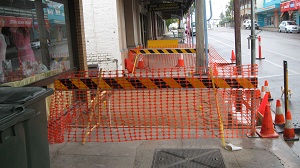Footpaths
In conjunction with other infrastructure planning, Council prioritises the expansion of our footpath network using factors such as destination, pedestrian profile and volume. Using this approach, Council can avoid the installation of isolated sections of footpath that become difficult to administer and maintain. Council prioritises and programs the installation and maintenance of footpaths each financial year.
Purpose and Scope of Council's Footpath Risk Management
The Footpath Risk Management Policy demonstrates that Council has a systematic and documented approach for reducing risks associated with the maintenance of footpaths. This, in turn, should reduce Council's exposure to liabilities associated with the maintenance and repair of footpaths.
The Footpath Risk Management Policy forms a part of the Enterprise Risk Management Policy. For the purpose of this Policy "footpath" means an area open to the public that is designated for, or has as one of its main uses, use by pedestrians whether sealed or unsealed and defined by kerb and channel excluding road verges.
The application of the policy is:
- apply the risk management principles of identification, evaluation, and treatment of risks to footpath maintenance;
- implement a formal system of footpath inspections which record identified risks including defined hazards;
- implement and maintain a risk database for footpaths through programed inspections and also incorporating reports of footpath hazards received from the public and/or employees;
- implement a method of prioritising the risks identified by the various sources;
- establish reasonably practical response times, in which to effect repairs, or provide temporary warnings, for the risks identified based on resources available;
- establish parametres around requests for planting trees on Council controlled land and application to do so.
